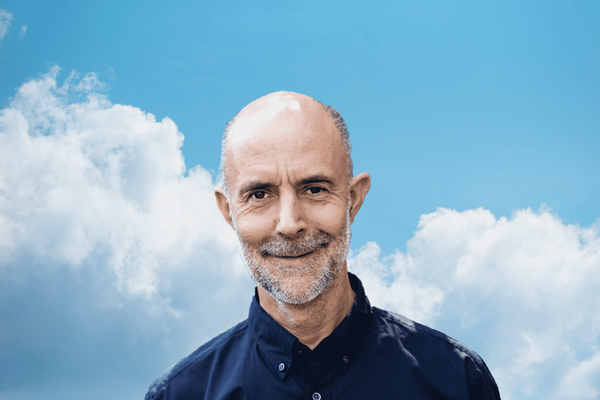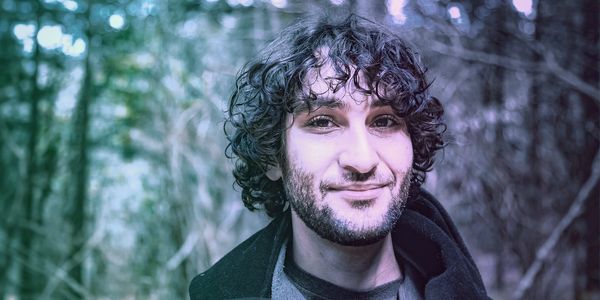Sam Brinson • • 5 min read
Mindfulness Is Not Meditation: How to Navigate Your Way to Presence

Mindfulness is a word being thrown around a lot recently. But there seems to be a lot of misunderstanding about what it is.
In this article I will show you the difference between mindfulness and meditation – and why it matters.
To be mindful, in very general terms, is to be aware.
Imagine this:
You’re walking with a friend down a busy road, it’s the middle of winter, and there’s snow and ice, cars are flying past, and a hundred men in business suits scuttle by with coffees. As you’re both about to cross a busy street, your friend turns to you and says, “be mindful of that ice on the step, could be dangerous.”
Question: what does that mean to you?
It means be aware of the ice, take notice of it, don’t let it escape you or you might suffer the repercussions. That’s being mindful.
It’s not meditation. You don’t need to sit with your legs crossed, and you don’t need to focus on your breath. You only need to be aware — you need to be present.
If there is one prerequisite to being mindful, it’s that you need to be ‘in the moment’ if you’re going to notice the goings-on around you. That makes sense right? You can’t be off daydreaming, thinking of upcoming meetings, or fighting off dragons in a mental representation of Mordor and still be totally aware.
You can only focus on one world at a time—the one outside your head, or the one within it.
That’s the layman’s version of being mindful.
There are, however, different interpretations.
Ellen Langer, a professor of psychology at Harvard University, in an interview with Harvard Business Review, says of being mindful:
“Life consists only of moments, nothing more than that. So if you make the moment matter, it all matters. You can be mindful, you can be mindless. You can win, you can lose. The worst case is to be mindless and lose. So when you’re doing anything, be mindful, notice new things, make it meaningful to you, and you’ll prosper.”
Here’s where it gets confusing:
Things can start to get a little vaguer when we add the ‘ness’ to the end.
Jon Kabat-Zinn, best-selling mediation author, says that mindfulness is:
“paying attention, on purpose, in the present moment, nonjudgmentally […] as if your life depended on it.”
Scott Bishop goes further in defining two aspects of mindfulness — the regulation of attention in order to maintain it in the immediate experience, and approaching those experiences with an orientation of curiosity, openness, and acceptance, regardless of their valence or desirability.
So here we have importance being placed on being nonjudgmental, of being open regardless of whether the present moment experiences are good or bad. Again, however, everybody has mentioned the necessity of being present. Let’s go a little further with Kabat-Zinn:
“It’s the attending itself that’s important, more important than what it is you’re paying attention to. If you start to pay attention to what we pay attention to, you start to notice that the mind is all over the place.”
Ellen Langer would seem to disagree with that definition…
“Vigilance, or very focused attention, is probably mindless. If I’m racing through the woods on horseback, watching the branches so that I don’t get hit in the face, I might miss the boulder on the ground, so then my horse stumbles and I’m thrown off. […] What you want is a soft openness—to be attentive to the things you’re doing but not single-minded, because then you’re missing other opportunities.”
(Ellen Langer has quite literally wrote THE BOOK on mindfulness)
So from the example earlier, you might notice the ice enough to step over it, but get hit by a guy on a bike—were you mindful or not? In Langers view, being truly conscious requires an open awareness even of the things you’re not focussed on.
With all these different views it’s rather difficult to actually decipher mindfulness, so I’m going to adopt a broad view: It’s a nonjudgmental awareness of the present moment—You need to keep your attention, there’s no looking to the future or past, it’s cold and analytical with no emotional reactions. In a way, you’re just observing the state of ‘being.’
What is Meditation?
Meditation is something slightly different and is a large topic to try and tackle here.
There are many forms of meditation, many of which come from Eastern philosophies such as Buddhism and Taoism. There are largely two types of meditation — Concentration practices require you to focus your attention on something, it could be your breath, your heartbeat, or something external. It’s forceful, you’re not supposed to let the mind go astray. The second type is open awareness, which still involves focusing your attention on something such as the breath, but is more about observing what happens around and inside you in a non-judgmental manner, so when your mind does wander you can notice it, and gently bring it back.
Look:
Concentration is forceful, awareness is gentle.
Mindful meditation is a form of the latter. Just as being mindful while you’re walking down the road is about being aware of your surroundings, mindful meditation is about being aware of the world around you, and the thoughts and emotions inside you.
Mindful meditation derives from the Buddhist Anapanasati, which means to feel the sensations caused by the movements of the breath in the body and is practiced in the context of mindfulness.
So meditation can be mindful, but mindfulness itself goes beyond meditation.
The most important point remains — being mindful involves being present.
Mindfulness: Being aware of the present — the environment, your emotions, sensations, thoughts, or lack because of that. In a nonjudgmental form of observation.
Mindfulness meditation: Meditation that cultivates mindfulness. It focuses the attention in a gentle way — Focus on the breath, if the mind wanders, acknowledge it, and go back to focusing on the breath.
Why It Matters
If you wish to walk the spiritual path to presence, you must first realize that there is no path at all. Mindfulness is attainable anytime, anywhere; in chronic pain, in euphoric bliss, with exorbitant wealth or without a penny to your name, you will always have mindfulness. You will always have the “now”.
Meditation is mindfulness practice: an ancient form of brain training designed to cultivate attention through focusing on the present moment. By meditating, yes, your mindfulness muscle will strengthen, but realize that it was always there anyway. You can run without being an Olympian, pick things up without being a weightlifter and cultivate mindfulness without mindfulness meditation.
Why does this matter?
You don’t need any course, any book, any blog to grant you the permission to be mindful. All you need is a mind curious about the moment it’s in. And if you made it this far, you certainly have one of those.
Keep Reading: The Ultimate Beginners Guide To Meditation
Resources:
Mindfulness For Beginners by John Kabat-Zinn
This post was originally published on SamBrinson.com
Note: You might have a different view than I, and that’s great, I have no quibbles. Let me know where you think I went wrong and what your version of mindfulness is. Thanks!










